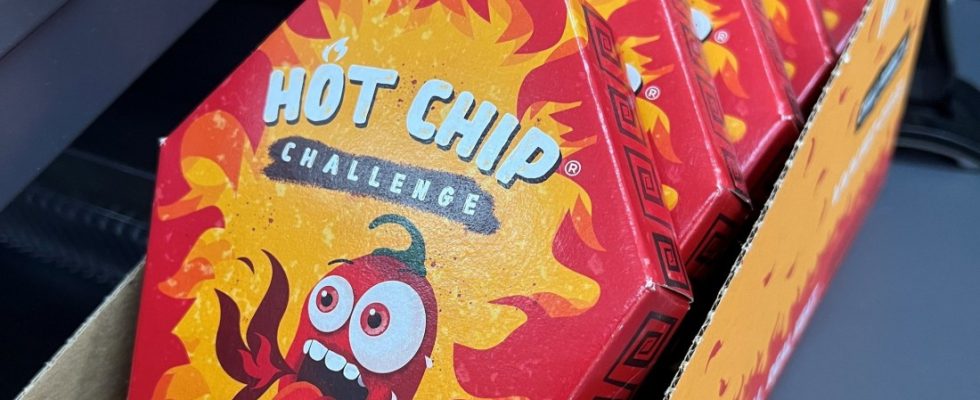If it were up to the botanists or the chili plants themselves, then capsaicin is made specifically for mammals like humans. The pungent alkaloid is intended to stop them from eating the tempting pods because the plant seeds in them cannot survive the digestive tract of mammals to germinate. In nature, the plants allow their seeds to be spread by birds, and they lack any sensitivity to the spiciness of capsaicin.
People don’t lack it, and so some of them have long been able to turn it into a kind of competition to see who eats the spiciest food. The current highlight of this is the “Hot Chip Challenge”, which is being enthusiastically promoted on social media, in which a single tortilla chip produces a lot of capsaicin at a considerable price per piece. Bavaria’s health authorities now want to put an end to this to be on the safe side.
The State Office for Health and Food Safety (LGL) has asked the health authorities in the districts and independent cities to remove the extremely spicy “hot chips” from circulation. It can be assumed that no product batch of the chips can be classified as safe, a spokesman for the state office said at the end of the week in response to a request from Augsburg General go with me. Importers had previously recalled individual batches, citing the fluctuating and sometimes extremely high capsaicin content of the chips in question.
The LGL now sees such problems in all product batches. Only a few days earlier, the authorities had issued a formal warning for the first time about the “Hot Chip Challenge,” in which people allow themselves to be filmed while eating a chip and post the video clips on the Internet. The often stated spiciness of the chips is more than two million Scovilles, roughly equivalent to that of pepper spray. The challenge is considered a test of courage among young people and has helped the manufacturer and retailer to achieve significant sales of the expensive, elaborately packaged coffin-shaped products.
“The product is not intended for children, pregnant or breastfeeding women” is what it says in the small print on the back of the package. People with gastrointestinal problems, stomach ulcers or cardiovascular diseases should therefore “avoid consumption” and consumers should “seek medical help if breathing problems persist for a long time”. At the same time, this warning fits into the design of the packaging, which plays with danger.
A “challenge” for some emergency rooms too
It has been shown several times that participants in the “Challenge” don’t always just break out in sweats, have watery eyes and have red heads. In the US, relatives blame them for the death of a 14-year-old who died after eating a similar chip. It is unclear whether this was actually the reason for his death. But in Germany, emergency services and emergency rooms have also had to deal with young challenge participants several times – often in a double pack, as was the case recently in Dortmund and Heilbronn. In mid-October, a 13-year-old and a 14-year-old came to the clinic in Garmisch-Partenkirchen with breathing problems, but were able to leave shortly afterwards.
According to the LGL, a high concentration of capsaicin “can lead to vomiting, shortness of breath, circulatory collapse or damage to the gastric mucosa.” Significant dangers could also arise from inhaling capsaicin dust, for example as a result of a cough reflex. The Federal Institute for Risk Assessment points out “undesirable effects such as irritation of the mucous membranes, nausea, vomiting and high blood pressure”. Shortly before the Bavarian LGL, Baden-Württemberg’s consumer protection minister, Peter Hauk, also warned about the “Hot Chip Challenge” and called on the authorities in his state to remove the chips from circulation.

